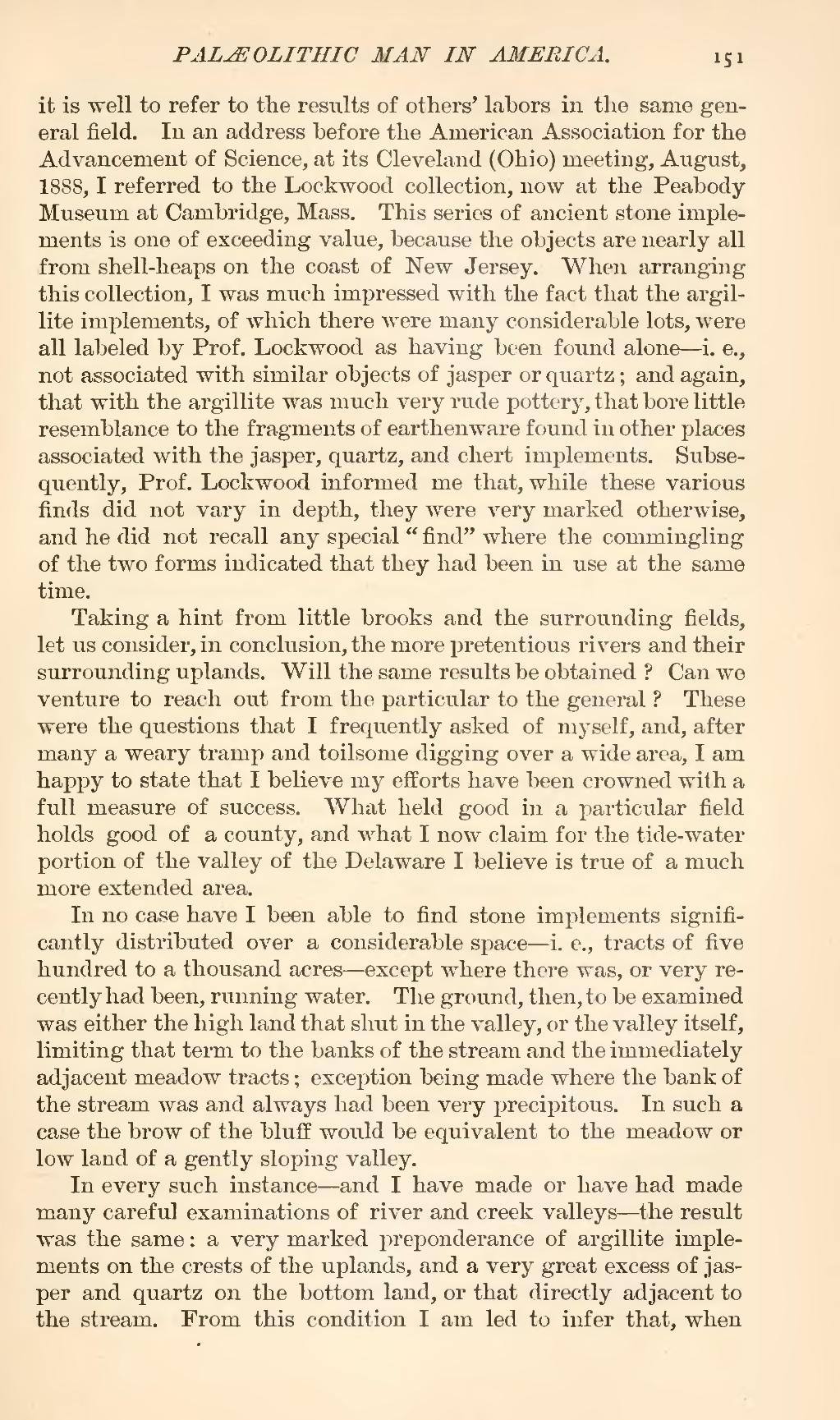it is well to refer to the results of others' labors in the same general field. In an address before the American Association for the Advancement of Science, at its Cleveland (Ohio) meeting, August, 1888, I referred to the Lockwood collection, now at the Peabody Museum at Cambridge, Mass. This series of ancient stone implements is one of exceeding value, because the objects are nearly all from shell-heaps on the coast of New Jersey. When arranging this collection, I was much impressed with the fact that the argillite implements, of which there were many considerable lots, were all labeled by Prof. Lockwood as having been found alone—i.e., not associated with similar objects of jasper or quartz; and again, that with the argillite was much very rude pottery, that bore little resemblance to the fragments of earthenware found in other places associated with the jasper, quartz, and chert implements. Subsequently, Prof. Lockwood informed me that, while these various finds did not vary in depth, they were very marked otherwise, and he did not recall any special "find" where the commingling of the two forms indicated that they had been in use at the same time.
Taking a hint from little brooks and the surrounding fields, let us consider, in conclusion, the more pretentious rivers and their surrounding uplands. Will the same results be obtained? Can we venture to reach out from the particular to the general? These were the questions that I frequently asked of myself, and, after many a weary tramp and toilsome digging over a wide area, I am happy to state that I believe my efforts have been crowned with a full measure of success. What held good in a particular field holds good of a county, and what I now claim for the tide-water portion of the valley of the Delaware I believe is true of a much more extended area.
In no case have I been able to find stone implements significantly distributed over a considerable space—i.e., tracts of five hundred to a thousand acres—except where there was, or very recently had been, running water. The ground, then, to be examined was either the high land that shut in the valley, or the valley itself, limiting that term to the banks of the stream and the immediately adjacent meadow tracts; exception being made where the bank of the stream was and always had been very precipitous. In such a case the brow of the bluff would be equivalent to the meadow or low land of a gently sloping valley.
In every such instance—and I have made or have had made many careful examinations of river and creek valleys—the result was the same: a very marked preponderance of argillite implements on the crests of the uplands, and a very great excess of jasper and quartz on the bottom land, or that directly adjacent to the stream. From this condition I am led to infer that, when
